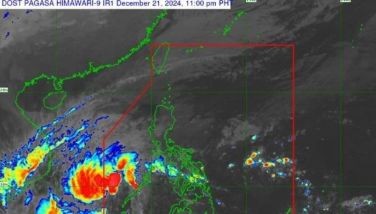PAMB permit sought
CEBu, Philippines — The Cebu City Planning and Development Office (CPDO) is set to request the City Council to amend the city’s zoning ordinance, so that developments inside protected areas would also be required to secure permits from the city before the developers apply for Protected Area Management Board (PAMB) clearance.
“Our recommendation is for PAMB to require applicants to go to City first for building permits before they issue their (PAMB) permits,” said City planner Architect Michael Joseph Espina via the city’s online platform Sugbuanon Channel.
Contractors, he said, should be required to secure locational clearances from CPDO and building permits from the Office of the Building Official before they could start construction.
He said his office decided on this after they learned that contractors reportedly only secure permits from PAMB before they start construction.
PAMB, Espina said, allowed developers to construct resorts and other structures inside the Central Cebu Protected Landscape (CCPL) without the city’s knowledge.
Espina said they learned of the unregulated developments at the CCPL in light of the fiasco at the Chocolate Hills in Sagbayan, Bohol almost three months ago.
He said it is only when the contractors apply for occupancy permits that they discover that they have been constructing without the necessary permits from City Hall.
“What happens there is that the building is already finished, but we just received the application of occupancy permits (only after the construction),” Espina said.
PAMB has the authority to issue permits for activities and developments within a protected area, as stipulated under Republic Act (RA) 9486 authored by then Rep. Eduardo R. Gullas.
Espina said the PAMB raises and collects funds from permits to manage the CCPL.
“But the problem is, the proponents do not go through the City after they get the permits from PAMB,” he said.
“The purpose of the RA 9486 is to safeguard areas needing protection from human intervention. It is ironical that things have become otherwise,” lamented the Cebu City planning and development officer.
Espina said there is a need for the City Government to intervene because the Cebuanos depend on the CCPL for its food and water needs.
At least 27 of the city’s 28 hinterland barangays produce vegetables within the CCPL, which covers 55 barangays in the cities of Cebu, Talisay, Toledo, and Danao, and the municipalities of Balamban, Minglanilla, Consolacion, Liloan and Compostela.
Cebu City’s watershed areas in Buhisan, Kotkot, and Lusaran, as well as the Mananga watershed, are also located within the CCPL.
“The Cebu Central Protected Landscape not only helps maintain ecological balance, such as providing fresh air and prevent soil erosion, it is also home to 400 species of various flora and fauna,” also said Arch. Anne Marie Cuizon, CPDO assistant head.
She said that if unregulated, developments in the CCPL could threaten this very important ecosystem.
She suggested that PAMB allow local government units (LGUs) with a stake at the CCPL to educate and inform the barangays on how to protect and preserve the area.
Espina also questioned provisions of RA 9486, particularly on representation within the PAMB, which right now consists of representatives of each barangay situated within the CCPL, and a representative from the LGUS and from the Department of Environment and Natural Resources, among others.
“In my opinion, there is no check and balance in the regulation of developments at the CCPL as the users are also the ones regulating themselves,” he said. (CEBU NEWS)
- Latest
























